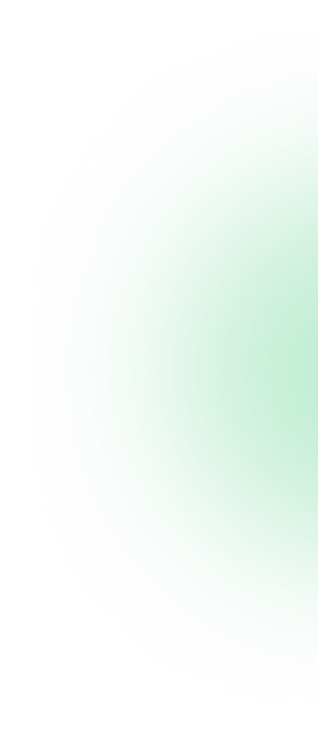-
Real-time tracking
YMS software tracks the location and status of every vehicle in the yard using GPS or RFID technology. Think of it like having eyes everywhere in your yard.
-
Automated scheduling
Based on arrival times, appointments, and priorities, YMS automatically assigns dock doors and parking spaces, reducing wasted time and congestion.
-
Improved communication
Drivers and yard personnel can easily communicate through the system, eliminating confusion and delays.
-
Data-driven insights
YMS collects valuable data on yard activity, helping businesses identify bottlenecks and optimize operations for better efficiency and cost savings.
Dev Technosys offers expert dedicated developers under a flexible Time and Material model to turn your vision into powerful, scalable digital solutions
Digital transformation is benefitting almost every industry in one way or the other, and logistics is one of them. Currently, the logistics supply chain digitization market, which had a valuation of $11,794 million in 2019, is anticipated to attain a value of $23,607 million by 2027. This growth is forecasted at a CAGR of 8.5% from 2020 to 2027. Also, software solutions have opened up the door of opportunities for businesses to grow faster. All this has given rise to yard management software development.
In today's dynamic landscape, the strategic implementation of Yard Management System Software is pivotal for seamless supply chain orchestration. This comprehensive guide delves into the intricacies of YMS software development, offering insights into cutting-edge technologies, best practices, and industry trends. So, let unlock the step-by-step process to develop yard management systems, including the essential features to include, cost of yard management software, and more.
What is Yard Management System Software?
A Yard Management System (YMS) is software designed to streamline and optimize the management of transportation yards, typically within warehouses, distribution centers, or manufacturing facilities.
YMS supply chain management software development enables real-time tracking, scheduling, and coordination of the movement of trailers, trucks, and other assets within the yard. It provides visibility into inventory, improves operational efficiency, reduces idle time, and enhances overall logistics performance.
Key features of yms software often include trailer tracking, appointment scheduling, gate management, and analytics. YMS contributes to better resource utilization, faster turnarounds, and ultimately, cost savings in the supply chain by efficiently organizing the flow of goods within the yard.
How YMS Yard Management System Work?
The working of the best yard management software is the same as other types of software. Here is a glimpse of how YMS system software works as explained by the automotive software development company professionals –
5 Popular Types of Yard Management Software Systems
Yard management systems solutions are designed to optimize and manage the movement of trailers and containers within a yard or distribution centre. These YMS transportation management systems help streamline operations, improve visibility, and enhance overall efficiency. Here are five popular types of yard management system software.
-
Real-Time Location Systems (RTLS)
RTLS-based yard management systems use technologies like RFID or GPS to track the real-time location of trailers and containers within the yard. It allows for accurate and up-to-date information on the position of assets.
-
Cloud-Based Yard Management Systems
Cloud-based YMS solutions offer the advantage of accessibility from anywhere with an internet connection. They provide real-time data, facilitate collaboration among stakeholders, and often integrate with other supply chain management systems.
-
Warehouse Management Systems and Transportation Management Systems
YMS software that seamlessly integrates with WMS and TMS allows for end-to-end visibility and coordination across the entire supply chain. This integration enables better planning, scheduling, and execution of yard activities by considering warehouse and transportation constraints.
-
Predictive Analytics and Optimization
Some advanced YMS solutions incorporate predictive analytics to forecast yard activities, optimize resource allocation, and minimize delays. These systems use historical data and machine learning algorithms to make predictions about future yard conditions.
-
Mobile Yard Management Apps
Mobile applications for yard management enable real-time tracking and management of yard activities on mobile devices. These apps often include features such as check-in/check-out processes, digital documentation, and communication tools.
How to Develop A Yard Management Software?
Are you planning for yard management software development? Discover the steps to develop a yard management system software and know the best ways to create a successful yard automation platform for your business. Here you go…
-
#Step 1 – Project Analysis and Requirement Gathering
Begin by conducting a thorough analysis of the yard management ecosystem and understanding the unique needs and challenges of your target users. Engage stakeholders, including yard managers, logistics professionals, and IT experts, to gather detailed requirements. Document all functional and non-functional requirements to establish a clear project scope.
Once you have a cleared a project scope in mind, it will become easier to develop a logistic management software or yms system as almost every software has the same process.
-
#Step 2 – Strategic Planning and Designing
Devise a strategic plan outlining the software architecture, technology stack, and development methodology. Create detailed wireframes and prototypes to visualize the user interface and interactions. Ensure that the design accommodates scalability, flexibility, and seamless integration with existing systems.
A strong planning with exclusive UX/UI app design will help you ensure seamless yard management software development process.
-
#Step 3 – Data Modeling and Database Design
Develop a robust data model that accurately represents the relationships between different entities within the yard management system. Choose an appropriate database system and design efficient data structures to optimize data retrieval and storage. Implement security measures to protect sensitive information and comply with relevant data protection regulations.
In case you find the process difficult, feel free to hire software developers or connect with a leading firm whose professionals can help you with yard management software development.
-
#Step 4 – Feature Development and Coding
Break down the project into manageable modules and begin coding based on the finalized design and specifications. Adopt an iterative development approach to create a yard management software, allowing for continuous testing and refinement. Prioritize features such as real-time tracking, inventory management, and reporting capabilities to enhance overall functionality of yard management system software.
Adding the right features by following a strategic yard management software development approach will help you come up with a successful yms system.
-
#Step 5 – Integration with IoT and Automation
Leverage the power of IoT to integrate sensors, RFID, or other tracking devices for real-time visibility and automation. Ensure seamless communication between the yard management software and various hardware components. Implement intelligent automation to streamline workflows, reduce manual errors, and improve overall efficiency.
Overall, you need to think of the third-party integrations to ensure smooth ad robust functioning of your yard management software. You can also connect with leading custom software development company professionals who can help you with the development of yms systems.
-
#Step 6 – Testing and Quality Assurance
Conduct rigorous testing at different stages of yard management software development, including unit testing, integration testing, and user acceptance testing. Identify and address bugs, performance issues, and potential security vulnerabilities.
Establish a comprehensive QA process to ensure the software meets industry standards and user expectations. It is an essential steps of all that helps to remove all the errors and bugs from the yard management software
-
#Step 7 – Deployment and Ongoing Support
Deploy the yard management software in a controlled environment, closely monitoring its performance and addressing any issues that may arise. Provide thorough training to end-users and support staff to ensure a smooth transition to the new system. Establish a robust maintenance plan, including regular updates, patches, and ongoing support to address evolving needs and challenges.
These are the seven simple steps for yard management software development that everyone must know before developing a YMS system software.
Key Features of Yard Management Software Development
Whenever you plan to develop yard management software, you must consider the unique features that are helpful in the long run. So, to help you integrate the best features within your yard management apps, the software development services professionals have listed the features below.
-
Real-time Visibility
This feature offers a real-time view of the yard, letting users monitor where trailers, containers, and assets are and their current status.
-
Yard Mapping and Layout
Displays the yard layout visually, helping users plan and optimize space allocation for trailers and containers.
-
Gate Management
Simplifies the check-in and check-out process at entrance gates, reducing congestion and enhancing overall efficiency.
-
Appointment Scheduling
Enables users to schedule and manage truck arrivals and departures, ensuring a smooth flow of goods in and out of the facility.
-
Task Prioritization and Optimization
Prioritizes tasks like loading and unloading based on urgency, decreasing dwell times and improving overall yard throughput.
-
Alerts and Notifications
Sends automatic alerts to relevant stakeholders about critical events, delays, or other vital information related to yard operations.
-
Integration with Other Systems
Seamlessly integrates with other supply chain management systems, like Warehouse Management Systems and Transportation Management Systems, ensuring end-to-end visibility and coordination.
-
RFID and Barcode Integration
Supports RFID tags and barcode scanning for accurate and efficient asset tracking, reducing manual errors and improving data accuracy.
-
Yard Performance Analytics
Provides analytics tools to analyze key performance indicators related to yard operations, enabling continuous improvement and strategic decision-making.
-
Compliance and Security
Ensures compliance with safety regulations and security protocols, including monitoring and recording activities within the yard for audit purposes.
-
Environmental Considerations
Includes features for optimizing fuel consumption, reducing emissions, and minimizing environmental impact through efficient yard management practices.
These are some helpful yard management software development features businesses should know and must include while creating a YMS system.
How Much Does Yard Management Software Development Cost?
The average cost to develop a yard management system software begins at $8,000 and might go beyond $25,000 or more, depending on the type of software developed. It is a rough cost estimation of projects like warehouse management system software development, YMS systems, etc. Besides this, there are some significant factors affecting the cost to create yard management software, such as –
-
Features and Complexity
The more features and complexity you want in your yard management software, the higher the cost. Basic yard management systems may have features like inventory tracking, while more advanced systems may include real-time visibility, automation, and integration with other enterprise systems.
-
Technology Stack
The choice of technology and programming languages can impact development costs. Some technologies may require more time and effort to implement than others.
-
Integration Requirements
If your yard management software needs to integrate with other existing systems, such as ERP, WMS, or transportation management systems, it may increase yard management software development costs.
-
Customization
The level of customization required also affects costs. It may take more time and resources if you need a highly tailored solution to fit specific business processes.
-
Development Team Location
Labor costs vary significantly based on the location of the development team. Development teams in regions with higher living costs and salaries will generally charge more.
-
Testing and Quality Assurance
Rigorous testing is essential for software development. The more comprehensive the testing process, the higher the cost will be.
-
Maintenance and Support
Post-launch maintenance and support are ongoing costs. It's important to factor in long-term support and updates.
Ready for Yard Management Software Development? Here You Go!
Automated yard management systems prove to be significant assets when it comes to optimizing cost and time in supply chain logistics. Exclusive features and functionalities of YMS solutions, like real-time tracking, ensure timely monitoring of the yard activities. Also, building yard management software eliminates paperwork and errors, which ensures business efficiency.
A well-developed yard automation platform enables yard managers to make smarter decisions while ensuring improved business growth. Moreover, the software will help businesses keep an eye on the ongoing business activities within the application.
But, all of this can only be possible when you successfully develop a yard management software. Right? So, if you have the technical knowledge and expertise, begin the yard management software development process without delaying further.
Other than this, if you are looking for a reliable business app development company whose experts can help you with YMS system software development, look no further than Dev Technosys. With over 13+ years of experience, we have developed thousands of business software, apps, and websites that have helped businesses grow from zero to the top. Feel free to get in touch with us.

















